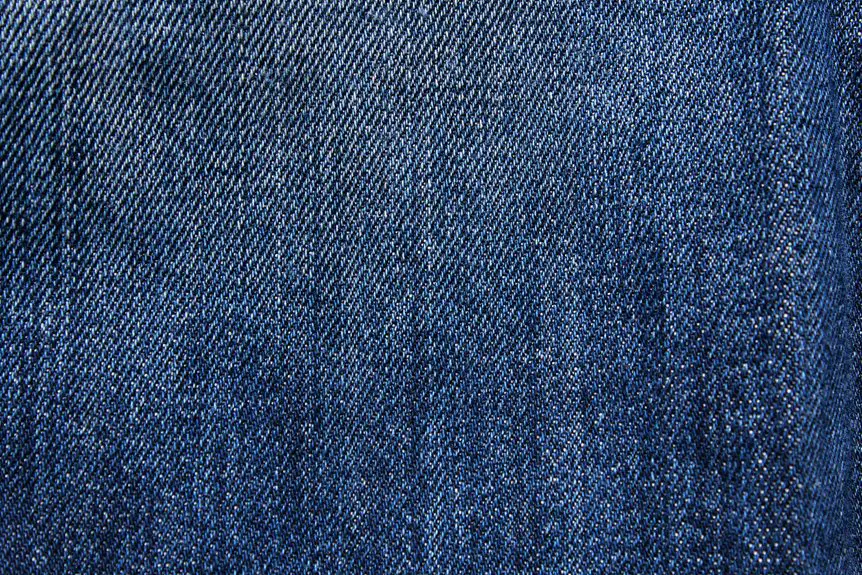Did you know that waxed cotton has been a go-to material for outdoor enthusiasts since the 19th century? This durable fabric not only repels water but also breathes well, making it a smart choice for various applications. As we explore its history and properties, you’ll discover how it stacks up against modern materials and what alternatives are available. The world of natural waterproofing solutions is more complex than you might think.
Table of Contents
Key Takeaways
- Waxed cotton offers natural water resistance and durability, ideal for outdoor gear and fashion items.
- Regular maintenance, including re-waxing every six months, ensures optimal performance of waxed cotton.
- Alternatives like oilskin and eco-friendly treated fabrics provide unique benefits, including lightweight options and reduced environmental impact.
- Natural waterproofing solutions are often biodegradable, breathable, and free from harsh chemicals, making them safer for both users and the environment.
- Consider personal needs and environmental impact when choosing between natural and synthetic waterproofing options for outdoor activities.
History of Waxed Cotton
Although waxed cotton might seem like a modern innovation, its roots trace back to the early 19th century when sailors and outdoor workers sought to create durable, water-resistant fabrics.
They discovered that applying a mixture of natural waxes to cotton could transform the material, making it more resilient against rain and harsh conditions. This practical solution quickly gained popularity, especially among those who relied on their gear for survival.
As time passed, manufacturers refined the technique, leading to a wide range of applications beyond maritime use. You’ll find waxed cotton in everything from jackets to bags, blending functionality with style.
This rich history highlights how necessity and creativity combined to produce a fabric that remains relevant in today’s world.
Properties of Waxed Cotton
When you consider the properties of waxed cotton, you’ll find it’s more than just a stylish fabric; it’s a practical choice for various applications.
Its natural water-resistant qualities make it ideal for outdoor gear, protecting you from the elements while maintaining breathability. The wax finish also adds durability, ensuring that the fabric can withstand wear and tear over time.
Plus, waxed cotton is easy to care for; a simple wipe-down is often enough to keep it looking fresh. You’ll appreciate its lightweight nature, which doesn’t compromise on strength.
Additionally, the fabric can develop a unique patina, enhancing its aesthetic appeal as you use it. Overall, waxed cotton combines functionality with a classic look, making it a versatile option for many needs.
Comparison With Modern Materials
Waxed cotton stands out with its unique blend of durability and style, but how does it stack up against modern materials like synthetic fabrics?
While synthetic options like nylon and polyester offer excellent waterproofing and lightweight properties, they often lack the aesthetic appeal and breathability of waxed cotton. You might appreciate waxed cotton for its natural feel and classic look, making it a popular choice for fashion-conscious consumers.
However, synthetic fabrics usually excel in quick-drying capabilities and resistance to UV damage.
Regarding maintenance, waxed cotton requires periodic re-waxing to maintain its waterproof qualities, while many modern materials are often machine washable.
Ultimately, your choice depends on whether you prioritize aesthetics or technical performance in your waterproofing needs.
Uses and Applications of Waxed Cotton
Waxed cotton’s versatility makes it a popular choice for various applications, from outdoor gear to stylish fashion pieces.
You’ll find it in everything from durable jackets to bags that combine functionality with aesthetic appeal.
Let’s explore how this unique material fits into your life and the benefits it offers.
Outdoor Gear Applications
How can you guarantee your outdoor gear withstands the elements? Waxed cotton’s durability and natural waterproofing properties make it an excellent choice for various outdoor applications. Whether you’re hiking, camping, or fishing, gear made from waxed cotton can keep you dry and comfortable.
Here’s a quick overview of its applications:
| Application | Benefits |
|---|---|
| Jackets | Water-resistant, breathable |
| Bags | Sturdy, weatherproof |
| Tents | Durable, easy to maintain |
| Boots | Protective, moisture-resistant |
Choosing waxed cotton for your outdoor gear means you’re investing in long-lasting protection. It not only shields you from rain but also resists wear and tear, ensuring your gear performs season after season.
Fashion and Aesthetics
While many people associate waxed cotton with outdoor durability, its versatility in fashion and aesthetics is equally impressive. You can find this stylish fabric in everything from jackets to bags, seamlessly blending function and flair.
The unique sheen and texture of waxed cotton elevate casual outfits, making them more sophisticated. Pair a waxed cotton jacket with jeans for a rugged yet polished look, or opt for a waxed tote to add a touch of elegance to your everyday ensemble.
Fashion designers appreciate its ability to hold structure while providing a chic, weather-resistant option. With various colors and finishes available, you can easily express your personal style while enjoying the benefits of this functional fabric.
Versatile Functional Uses
When you consider waxed cotton, think beyond fashion; this material excels in a range of practical applications.
You can use waxed cotton for outdoor gear like jackets and backpacks, providing durability and water resistance. It’s perfect for making sturdy tarps, ensuring you stay dry during camping trips.
You might also find it useful for crafting bags and pouches that withstand the elements, giving your belongings an extra layer of protection.
In addition, waxed cotton is great for home decor projects, such as tablecloths and chair covers, combining style with functionality.
Whether you’re an outdoor enthusiast or a DIY lover, waxed cotton offers versatility that meets your needs while maintaining a classic aesthetic.
Embrace its potential in your next project!
Maintenance and Care for Waxed Cotton
To keep your waxed cotton in top shape, you’ll want to stay on top of a few key maintenance tasks.
Reapplying wax regularly, following the right washing and drying tips, and storing it properly can make all the difference.
Let’s explore how to extend the life of your favorite waxed cotton items.
Wax Reapplication Frequency
Maintaining the waterproof qualities of waxed cotton requires regular reapplication of wax, especially after heavy use or exposure to harsh elements.
Generally, you should plan to reapply wax every six months to a year, depending on your activity level and the conditions your gear faces.
If you notice the fabric starting to lose its sheen or water begins to seep through, it’s time to refresh the wax.
When you do, make sure to clean the surface gently before applying a new layer.
It’s best to use a high-quality wax specifically designed for your cotton fabric.
With consistent care, you’ll enjoy the durability and performance of your waxed cotton items for years to come.
Washing and Drying Tips
Regular wax reapplication guarantees your waxed cotton stays water-resistant, but proper washing and drying techniques are also essential to maintaining its integrity.
Start by hand-washing your waxed cotton with cool water and a mild soap; avoid harsh detergents or washing machines, which can strip the wax. Gently scrub any stains with a soft brush, then rinse thoroughly to remove soap residue.
When it’s time to dry, hang it in a shaded area away from direct sunlight; heat can damage the wax and fabric. Never put your waxed cotton in a dryer.
After drying, you might need to reapply wax to restore its water-repellent properties. Following these tips will keep your waxed cotton looking great and performing well.
Storage Best Practices
Proper storage is essential for keeping your waxed cotton in top condition. First, make certain it’s clean and completely dry before storing.
Roll or fold it loosely to avoid creases, and store it in a cool, dry place away from direct sunlight. Avoid plastic bags; instead, opt for a breathable cotton or canvas bag to prevent moisture buildup.
If possible, hang your waxed cotton items to maintain their shape. Keep it away from sharp objects or heavy items that could cause punctures or damage.
Check periodically for signs of wear or moisture, and reapply wax as needed to maintain its waterproof properties. Following these practices guarantees your waxed cotton lasts for years to come.
Alternatives to Waxed Cotton
Have you considered other options for waterproofing besides waxed cotton? There are several effective alternatives that might suit your needs.
For instance, you could explore oilskin, a fabric treated with oils that creates a robust water-resistant barrier. Another choice is PU-coated nylon, which offers excellent waterproofing while remaining lightweight and durable.
Explore oilskin for a robust water-resistant barrier or choose lightweight PU-coated nylon for excellent waterproofing.
If you prefer something more eco-friendly, look into hemp or linen fabrics treated with natural oils or waxes. These provide a sustainable yet effective solution.
Additionally, consider using a durable water repellent (DWR) spray on your fabrics for extra protection.
Each of these options provides unique benefits, whether it’s durability, sustainability, or lightweight convenience, ensuring your gear stays dry in various conditions.
The Benefits of Natural Waterproofing Solutions
While synthetic materials often dominate the waterproofing market, natural solutions offer distinct advantages that can enhance your outdoor experience.
First, natural waterproofing methods, like waxed cotton, are biodegradable, reducing your environmental impact. They’re also breathable, allowing moisture to escape, which keeps you comfortable during physical activities.
You’ll find that natural fabrics often develop a unique patina over time, adding character and style to your gear. Additionally, they’re typically free from harsh chemicals, making them safer for your skin and the environment.
Natural waterproofing solutions can be easier to repair, ensuring longevity and usability. By choosing these options, you’re not just investing in quality; you’re also embracing sustainable practices that align with a more eco-conscious lifestyle.
Frequently Asked Questions
How Does Waxed Cotton Compare to Treated Leather for Waterproofing?
Did you know that waxed cotton can repel water effectively for up to 30 days? When comparing it to treated leather, you’ll find waxed cotton lighter and more breathable, while leather offers superior durability and longevity.
Can Waxed Cotton Be Recycled or Composted?
You can’t recycle waxed cotton easily due to its treatment, but you might compost it if it’s untreated. Always check your local guidelines to see what’s accepted in your recycling or composting programs.
Is Waxed Cotton Suitable for All Weather Conditions?
Waxed cotton isn’t suitable for all weather conditions. While it offers water resistance, heavy rain or prolonged exposure can lead to saturation. You’ll want to contemplate other materials for extreme wet or humid environments.
How Does Humidity Affect the Performance of Waxed Cotton?
You might think humidity wouldn’t bother waxed cotton, but it can actually compromise its waterproof properties. The fabric absorbs moisture, making it less effective. Keeping it dry guarantees you enjoy its protective benefits fully.
What Colors and Patterns Are Available for Waxed Cotton Products?
You’ll find waxed cotton products in a variety of colors and patterns, ranging from classic hues like navy and olive to vibrant shades and unique prints. There’s something to suit every style and preference!
- How to Buy Fabric Wholesale Directly From China - June 20, 2025
- The Best Upholstery Fabric Suppliers in China for Your Business - June 20, 2025
- An Overview of China’s Role in Apple’s Product Fabrication - June 20, 2025




